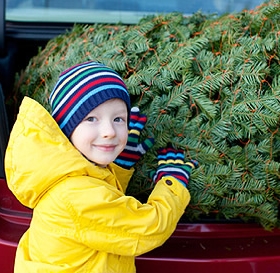Article at a Glance
- Having a live Christmas tree in your house can increase the mold count in your home by 10 times the normal levels.
- If you experience allergy symptoms after bringing home your Christmas tree, you may want to replace your tree with an artificial one.
- Before setting up artificial or live trees in the house, take them outside to give them a good spray down with the hose and shake them out.
Allergic to mold? You may want to think twice about bringing a live Christmas tree home.
The normal indoor mold count in a home is 500 to 700 spores per cubic meter of air. However, bringing in a live Christmas tree can increase the mold count up to 5,000 spores per cubic meter. No wonder so many allergy suffers see a spike in symptoms around the holidays.
Christmas trees are cut ahead of time and stored in a moist environment before they are sold. They are then placed in water to help keep them fresh. But what helps the tree last longer is also helping mold thrive.
Common symptoms of a mold allergy include eye, throat, and nasal irritation, stuffy nose, and headaches. If you are allergic to mold, high mold counts can place you at an increased risk of an asthma attack.
To help cut down on the mold and dust levels in your home during the holidays, here are some helpful tips.
- Substitute your live tree for an artificial one. Bringing in fresh pine boughs and wreaths also contributes to increased mold counts.
- If you do decide to get a live tree, only keep it for a few days and remove it right away if you notice any symptoms.
- Artificial trees and other Christmas decorations can also be a source of dust and even mold depending on how they are stored. Place all your decorations in a sealed and dry place.
- Before setting up artificial or live trees in the house, take them outside to give them a good spray down with the hose and shake them out.
Share this article:
